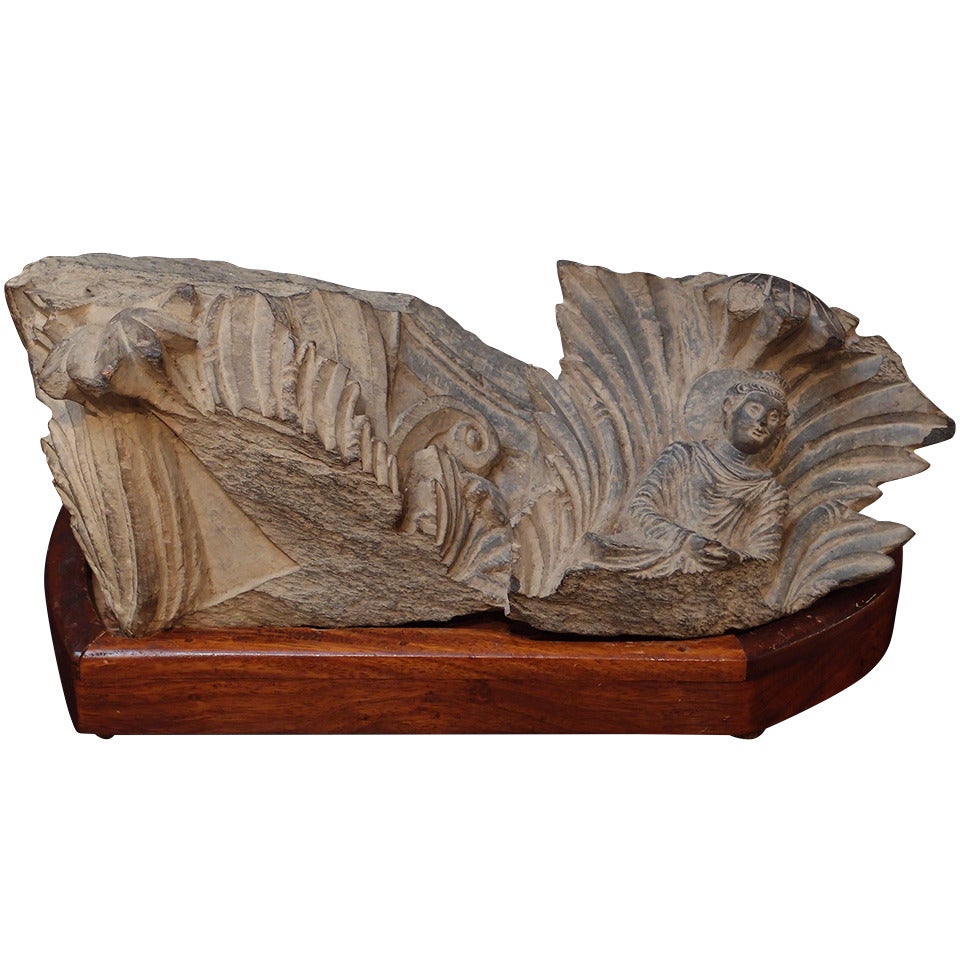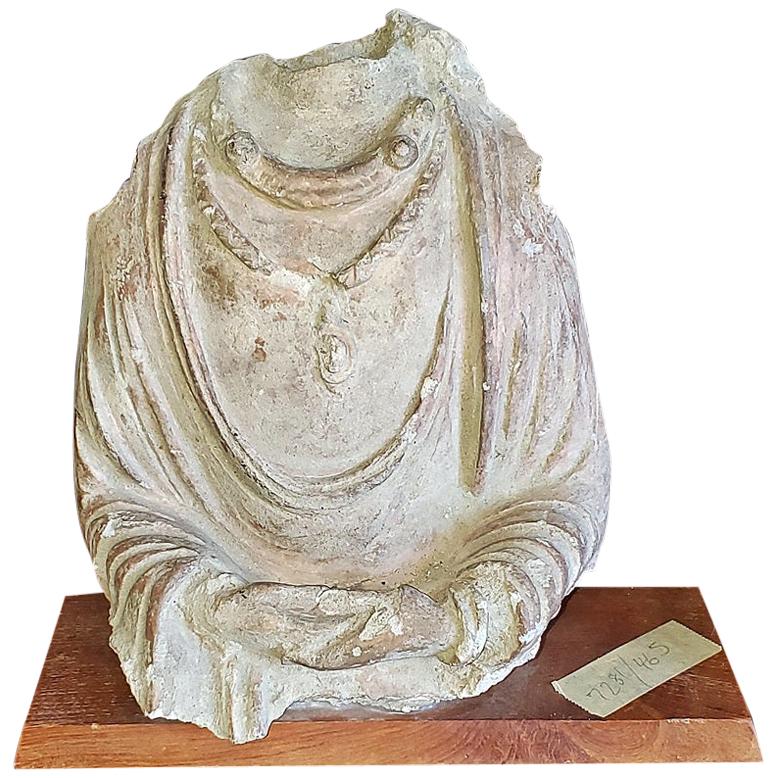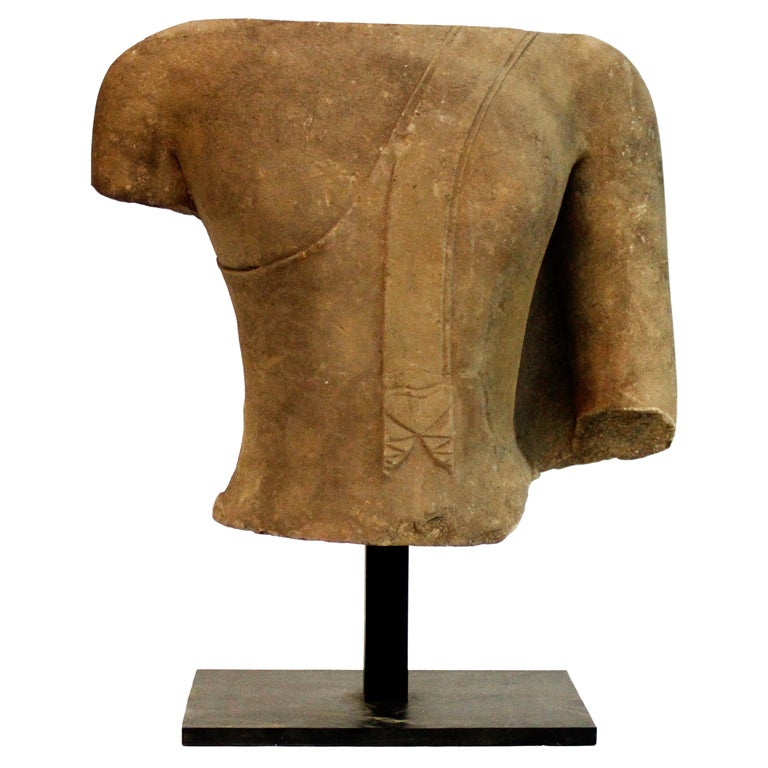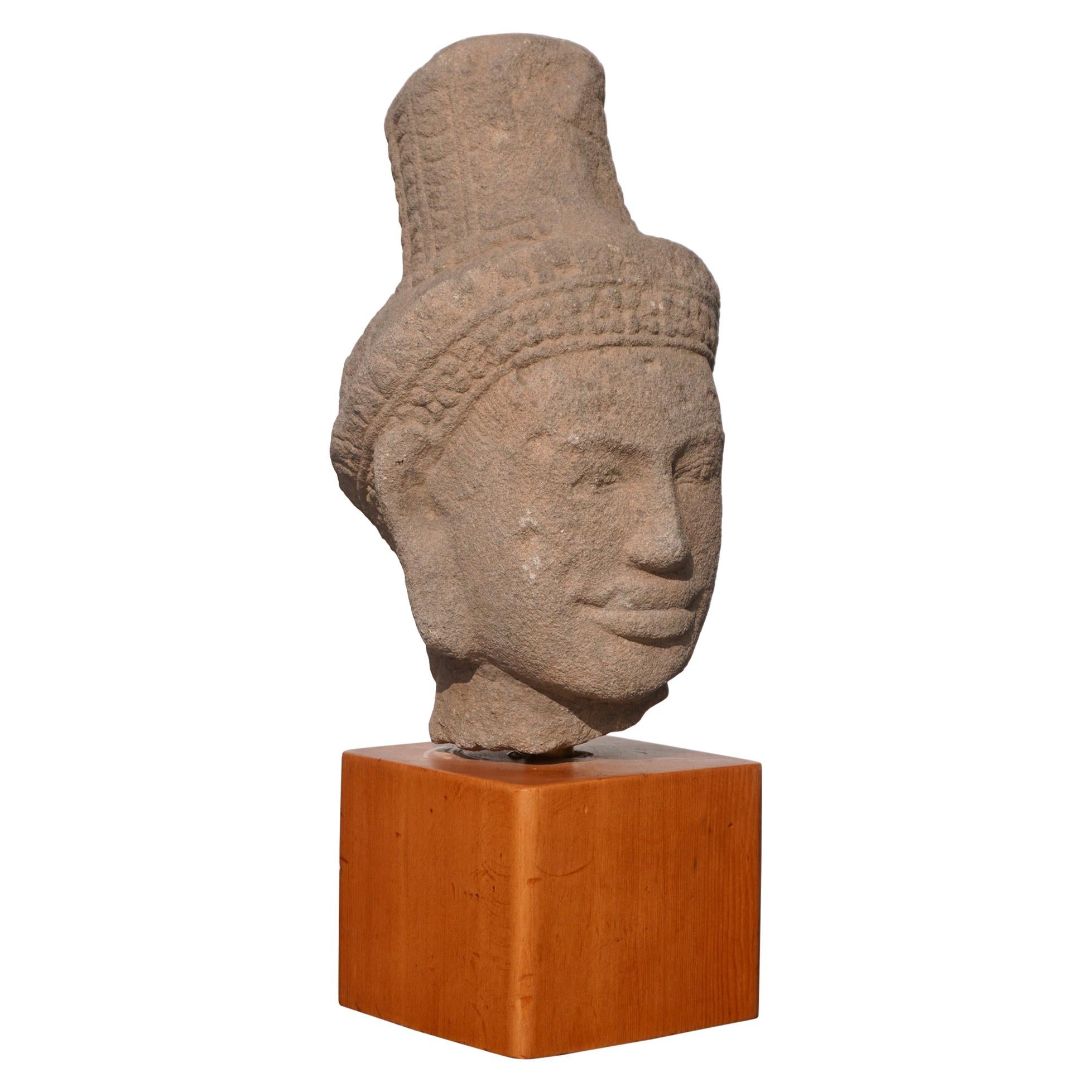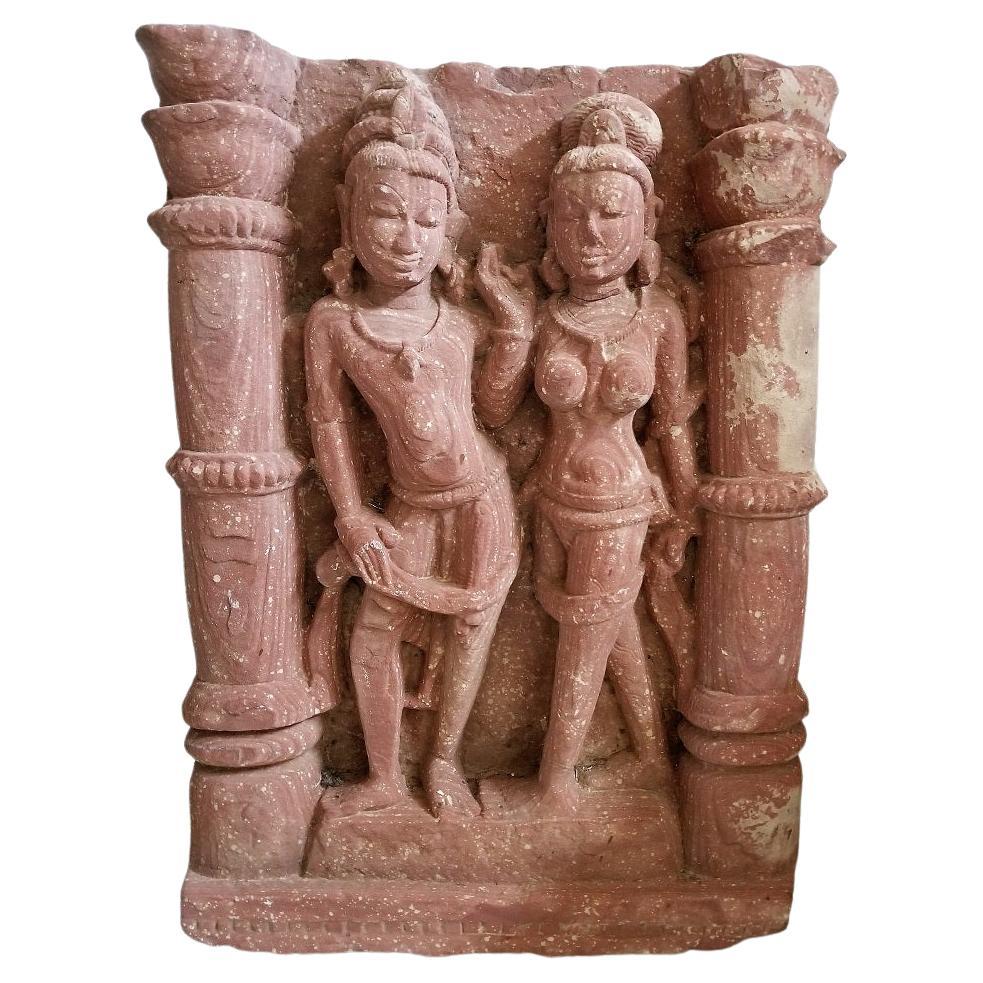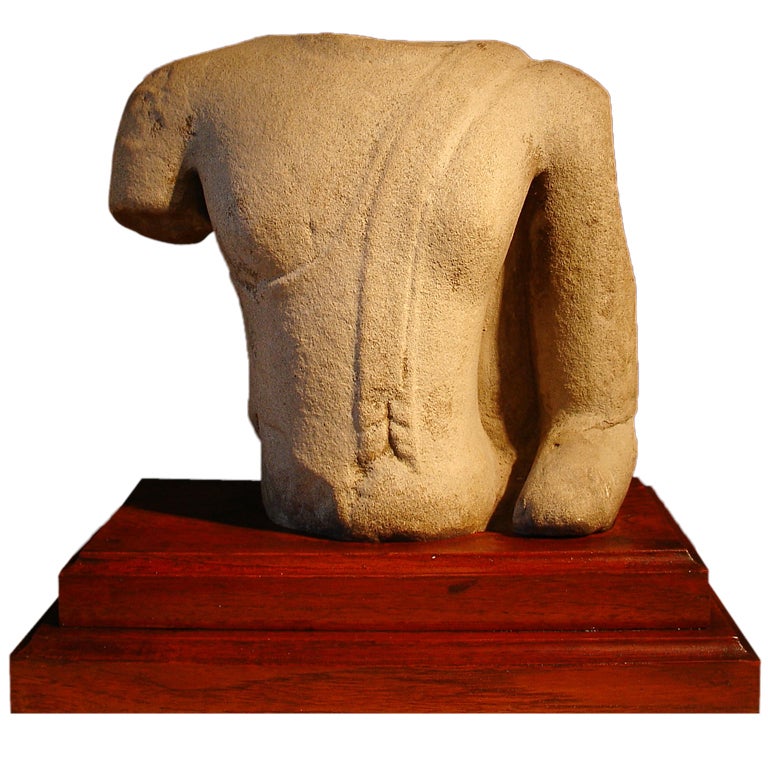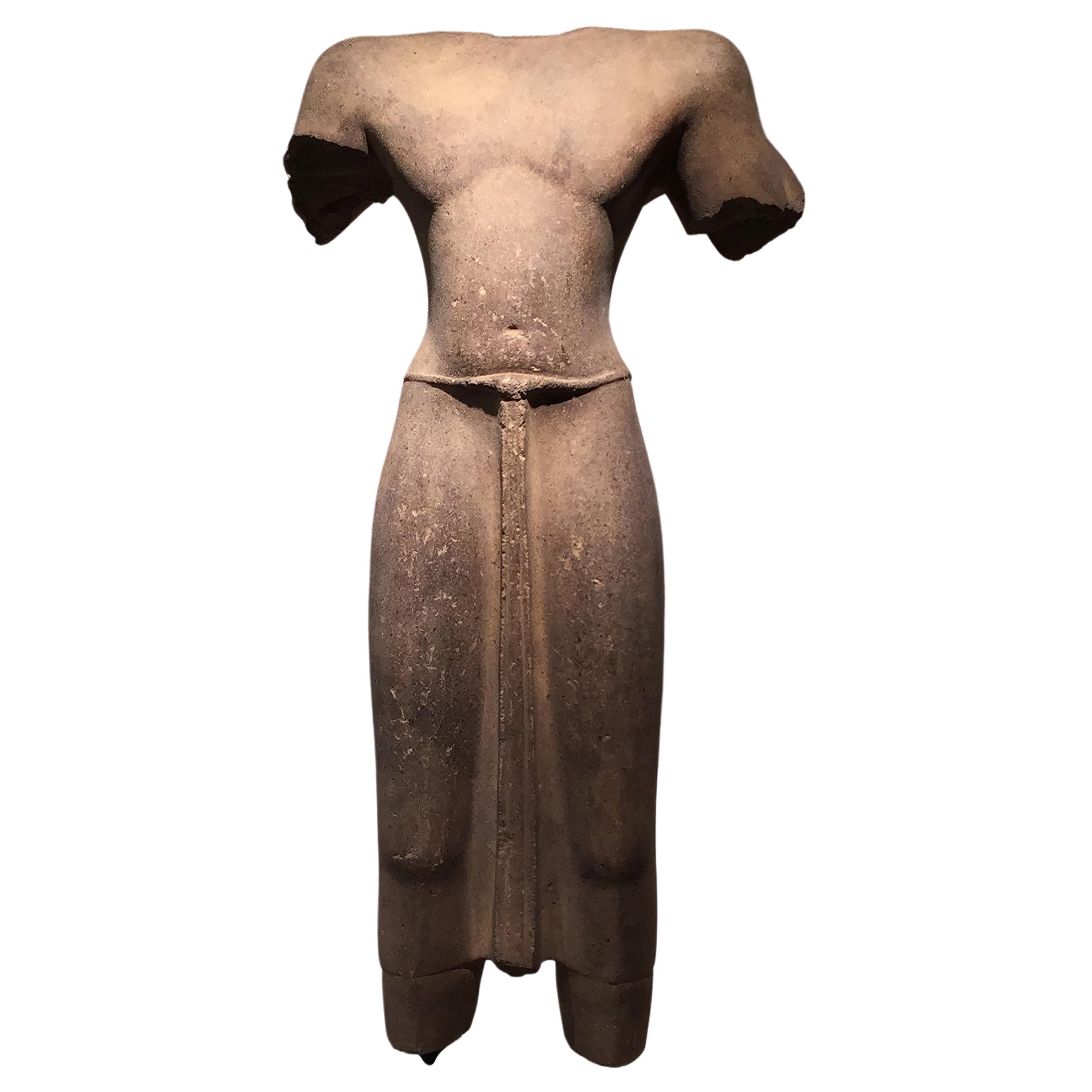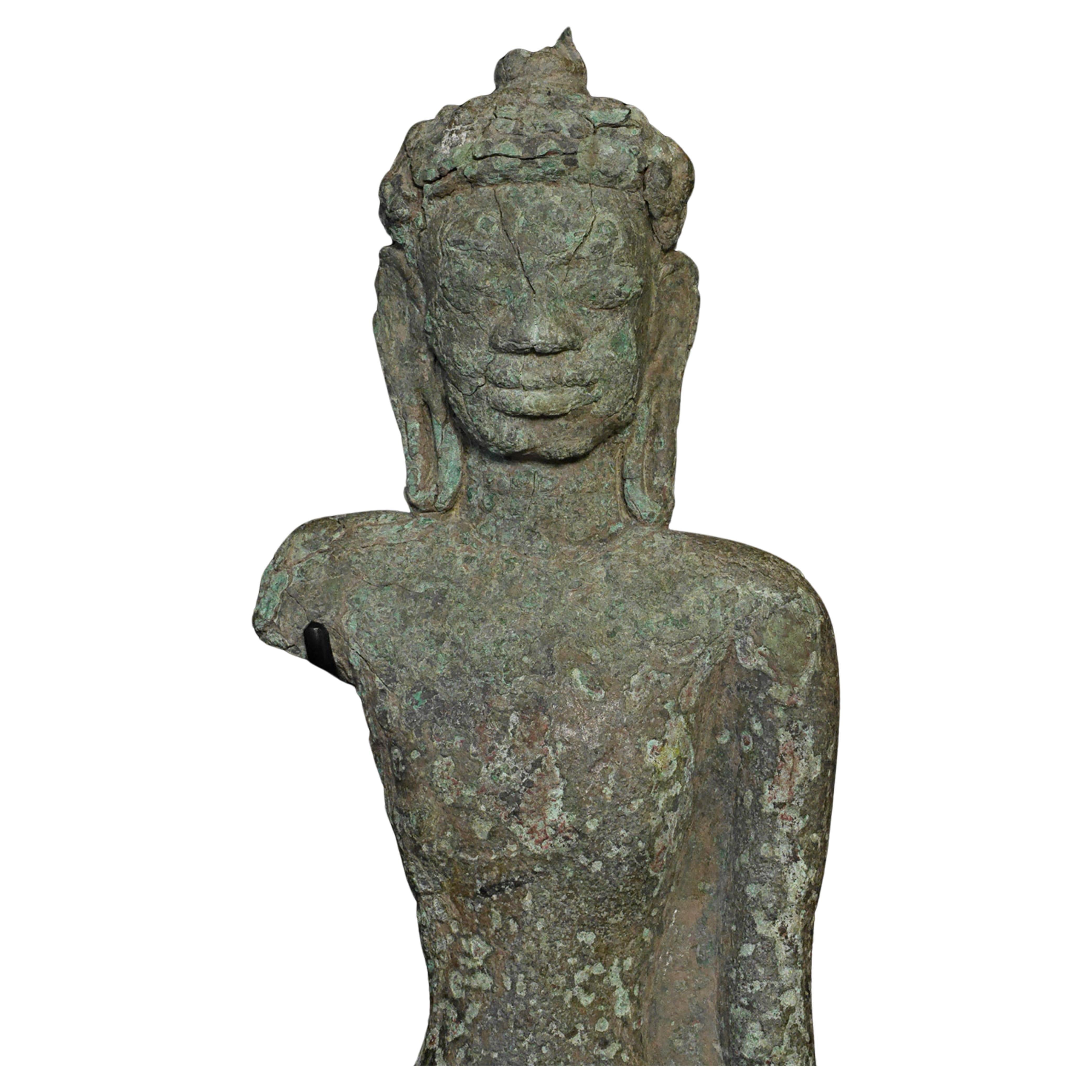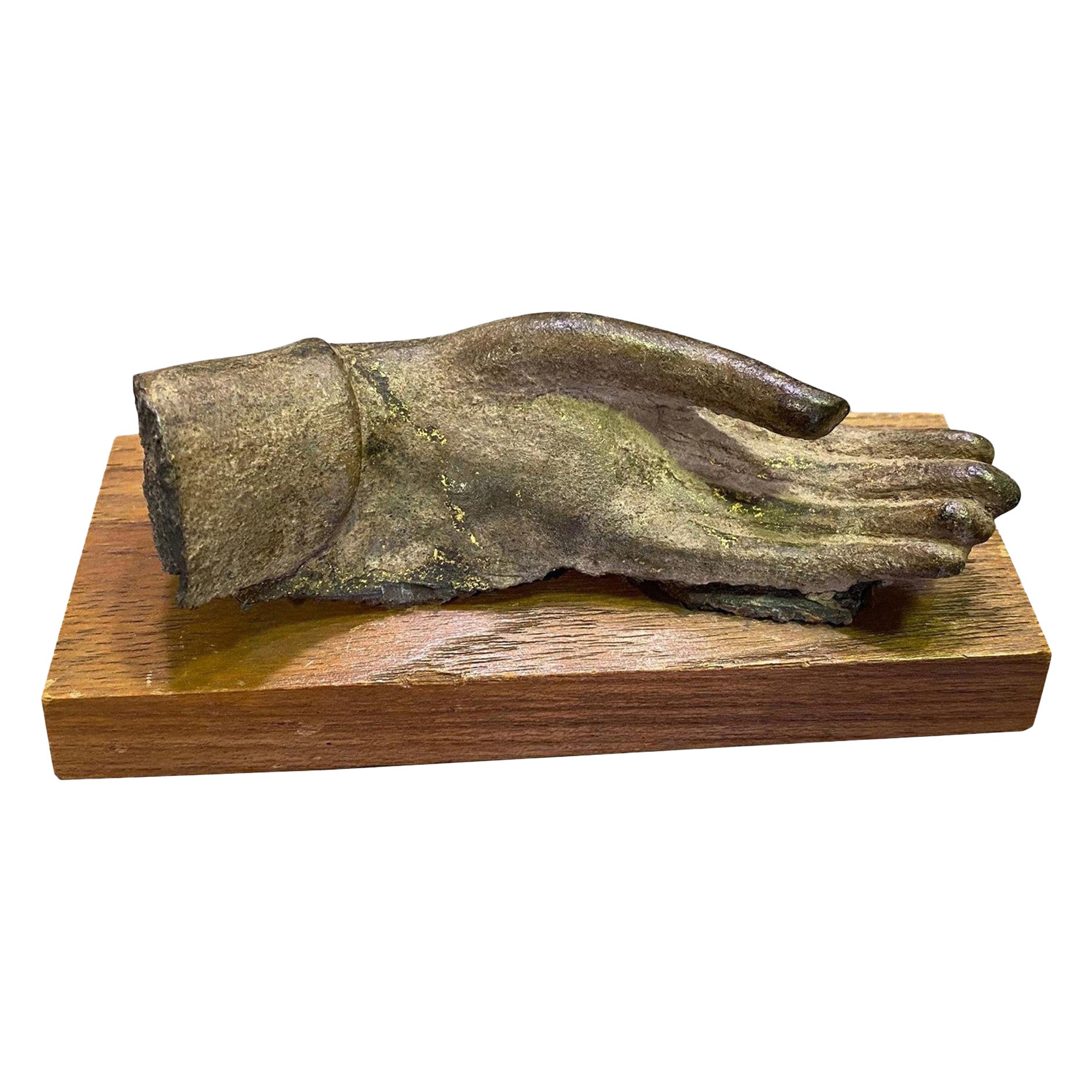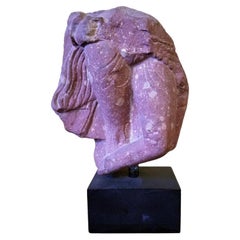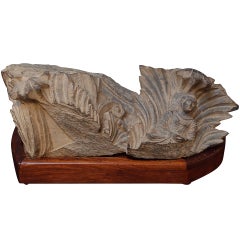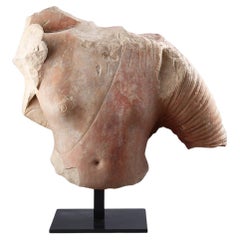
Monumental Red Sandstone Torso Fragment of the Buddha
View Similar Items
Want more images or videos?
Request additional images or videos from the seller
1 of 6
Monumental Red Sandstone Torso Fragment of the Buddha
About the Item
- Dimensions:Height: 23.5 in (59.69 cm)Width: 30.3 in (76.97 cm)Depth: 9 in (22.86 cm)
- Materials and Techniques:
- Place of Origin:
- Period:
- Date of Manufacture:1st – 2nd Century AD
- Condition:
- Seller Location:London, GB
- Reference Number:1stDibs: LU9363238241652
About the Seller
New to 1stDibs
Joined in the past six months.
No Reviews Yet
Vetted Seller
These experienced sellers undergo a comprehensive evaluation by our team of in-house experts.
Established in 1989
1stDibs seller since 2023
More From This SellerView All
- An Over Life-Size Powerful Roman Male Portrait Head of Constantine the GreatLocated in London, GBAn Over Life-Size Powerful Roman Male Portrait Head of Constantine the Great (c.272 - 337) Wearing the ‘Imperial Oak Wreath’ the decorative border of his ‘tunic’ can still be clearly seen on the left hand side Marble Italy Early 4th Century AD SIZE: 38cm high, 24.5cm wide, 25cm deep - 15cm high, 9¾ ins wide, 10 ins deep PROVENANCE: Ex Private collection, Cambridge, England note: For a very similar over life-size portrait head of Constantine I (the Great) wearing an identical wreath dating from the early 4th century AD see: Yorkshire Museum, York, inv. no. ‘YORYM’ 1998.23. Found in ‘Eboracum’ (York) in 1823 LITERATURE: Rinaldi Tufi, S., Yorkshire. ‘Corpus Signorum Imperii Romani (Great Britain)’; vol. 1, fasc. 3, Yorkshire. Oxford University Press, 1983; 23, no. 38, pl. 12 In AD 306, Constantine was hailed emperor in the Roman city of York; he was the first emperor to convert to Christianity. Born in Naissus, the son of Flavius Constantius, and Helena, a woman of low birth and a christian. Following his campaigns in the eastern provinces, Constantine was recalled in 305 AD to fight alongside his father in the province of Britannia. After his father’s death in 306 AD, Constantine was acclaimed as ‘imperator’ by his army at Eboracum (York) eventually being declared victorious after the civil wars against emperors, Maxentius and Licinius to become sole ruler of the Roman Empire in 324 AD. Constantine’s Christian belief cannot be underestimated, establishing the foundations of ‘Western Christendom’. In 313 AD he was influential in the proclamation of the ‘Edict of Milan, declaring tolerance of Christianity within the Roman Empire. The Church of the Holy Sepulchre, the purported site of Jesus’s tomb...Category
Antique 15th Century and Earlier Italian Classical Roman Antiquities
MaterialsMarble
- A Rare and Important Late Roman Marble ColumnLocated in London, GBA Rare and Important Late Roman Marble Column With a fluted spiral central column shaft rising to a carved integral capital with Corinthian ‘acanthus’ leaf decoration, the base with ...Category
Antique 15th Century and Earlier Greek Antiquities
MaterialsMarble
- A Fine Monumental Ovoid Bronze Vase or Ewer 'after the antique'Located in London, GBA Very Fine and Monumental Ovoid Vase or Ewer ‘after the antique’ Bronze The bulbous body with a spout springing from a grotesque mask, the loop handle cast and chased with fruit a...Category
Antique 17th Century French Vases
MaterialsBronze
- A Very Rare and Important Marble Relief of the ‘Resurrection of Christ’Located in London, GBA Very Rare and Important Marble Relief of the ‘Resurrection of Christ’ Attributed to the Master of the Mascoli Altar Marble Venice, Italy Second half of the 15th Century SIZE: ...Category
Antique 15th Century and Earlier Italian Renaissance Figurative Sculptures
MaterialsMarble
- A Polychrome and Parcel-Gilt Marble Group of the Virgin and ChildLocated in London, GBA Polychrome and Parcel-Gilt Marble Group of the Virgin and Child Attributed to Giovanni Di Balduccio (1317 - 1349) Marble Italy Circa 1330 - 1340 SIZE: 65cm high, 28cm wide - 25½ i...Category
Antique 15th Century and Earlier Italian Figurative Sculptures
MaterialsMarble
- A Fine Large Wedgwood Black Basalt Library Bust of the Ancient Greek Epic Poet HBy WedgwoodLocated in London, GBA Fine Large Wedgwood Black Basalt Library Bust of the Ancient Greek Epic Poet Homer Impressed Wedgwood Mark 1780–1812 Early 19th Century Size: 59cm high – 23¼ ins high Provenance...Category
Antique Early 19th Century British Busts
MaterialsTerracotta
You May Also Like
- 2nd Century Indian Red Sandstone Fragment of a WomanLocated in Dallas, TXPresenting a stunning little piece of Southeast Asian Indian Antiquity, namely, a Double-sided 2nd Century Red Sandstone Fragment of a Woman. From India, Uttar Pradesh, Mathura. This piece has impeccable Provenance ! It was purchased by a Private Dallas Collector at Christie’s New York Auction on 31st March 2005. Sale Number 1492, Lot No. 43. Christie’s operate a twice yearly auction of Southeast Asian Art & Antiquities in New York in the months of March and September. The sculpture was described as “Property of a European Estate. A Double-sided Red Sandstone Fragment of a Woman. India, Uttar Pradesh, Mathura, Circa 2nd Century.” “Both sides similarly depicting the lower body with a flared sash at left and remains of chained belt: marked with an accession number 1931 on reverse. 8 in (29.2 cm.) high” Provenance: Collection of Prince and Princess Aschwin zur Lippe-Biesterfeld, acquired on 1958?. It carried an Auction estimate of USD 3,000 to USD 5,000 and Sold for USD 2,880 (not including Buyers Premium). Allowing for inflation alone this would be over $6,300 in today’s value. It has substantially increased in value over the years as a RARE piece from a prestigious Collection and a RARE piece of antique Asian antiquity...Category
Antique 15th Century and Earlier Indian Medieval Antiquities
MaterialsSandstone
- Gandharan Column Capital Fragment with an Image of the BuddhaLocated in Austin, TXA bold and expressive Gandharan carved gray schist column capital fragment, circa 2nd - 3rd century, ancient region of Gandhara. The fragment of a c...Category
Antique 15th Century and Earlier Pakistani Hellenistic Sculptures
MaterialsSchist
- Monumental Buddha Torso White Marble Sculpture - Tang Dynasty China 618-907 ADLocated in San Pedro Garza Garcia, Nuevo LeonBeautiful and impressive early Tang white marble sculpture of headless Buddha, dressed in an elegant pleated toga. China. 618-907 AD. A true collectors piece. This magnificent piece...Category
Antique 15th Century and Earlier Chinese Tang Antiquities
MaterialsMarble
- A Stucco Torso of the Buddha, Gandhara, 4th-5th CenturyLocated in Dallas, TXPRESENTING a STUNNING piece of Indian Antiquity from circa the 4th-5th Century, namely, A Stucco Torso of the Buddha, Gandhara. Ancient Gandhara is located in the rugged foothills of the Himalayas in what is today northwest Pakistan and eastern Afghanistan, was for centuries a thriving center of trade along the Silk Road linking China, South Asia, and the Mediterranean. The piece was purchased by a Private Collector at Sotheby’s, or more probably, Christies of New York Auction pre-2000. The paper label on the wooden base is “7281/465” for Sale Number 7281, Lot No. 465. Sotheby’s and Christies operate a twice yearly auction of Southeast Asian Art & Antiquities in New York in the months of March and September. The Sale Number is more like a ‘Christies;’ Sale Number but we cannot locate any records for this sale online as it was pre-2004. The sculpture is a Gandharan stucco headless bust...Category
Antique 15th Century and Earlier Afghan Medieval Antiquities
MaterialsStucco
- Thai Sandstone Torso of BuddhaLocated in Chicago, ILThis sizeable torso is from Ayutthaya, and is one of three pieces that made up a figural sculpture of Buddha. Comprised of elegant curves and soft lines, the details of diaphanous ro...Category
Antique 18th Century Thai Sculptures and Carvings
MaterialsSandstone
$14,000 Sale Price43% Off - Khmer Sandstone Buddha Shiva Head 11th CenturyLocated in Dallas, TXA sandstone figure head of Shiva Khmer, Baphuon style, circa 11th century. A rare Khmer gray sandstone head of Shiva. The handsome head of the divinity deity Shiva. His face with serene expression, almond-shaped eyes, ridged eyebrows and elongated earlobes, His headdress in tight rows and piled in tresses at the top of the head. Provenance: From a Canadian auction selling the estate of a French gentleman who amassed a large collection of Gandhara, Buddhas and Khmer items throughout his life. Measures: Head: 8 x 4.5 x 4.5 inches (20.5 x 11.4 x 11.4 cm) With stand: 10.7 inches tall Similar to item at Christies SALE 2828, Lot 1124 Indian and Southeast Asian Art 19, March 2014, New York. Shiva ( Siva, lit. the auspicious one) also known as Mahadeva ( lit. the greatest god) is one of the principal deities of Hinduism. He is the Supreme Being within Shaivism, one of the major traditions within contemporary Hinduism. Shiva is known as "The Destroyer" within the Trimurti, the Hindu trinity that includes Brahma and Vishnu. In Shaivism tradition, Shiva is the Supreme being who creates, protects and transforms the universe. In the tradition of Hinduism called Shaktism, the Goddess, or Devi, is described as supreme, yet Shiva is revered along with Vishnu and Brahma. A goddess is stated to be the energy and creative power (Shakti) of each, with Parvati (Sati) the equal complementary partner of Shiva. He is one of the five equivalent deities in Panchayatana puja of the Smarta tradition of Hinduism. According to the Shaivism sect, the highest form of Shiva is formless, limitless, transcendent and unchanging absolute Brahman,[16] and the primal Atman (soul, self) of the universe. There are many both benevolent and fearsome depictions of Shiva. In benevolent aspects, he is depicted as an omniscient Yogi who lives an ascetic life on Mount Kailash[1] as well as a householder with wife Parvati and his two children, Ganesha and Kartikeya. In his fierce aspects, he is often depicted slaying demons. Shiva is also known as Adiyogi Shiva, regarded as the patron god of yoga, meditation and arts. The iconographical attributes of Shiva are the serpent around his neck, the adorning crescent moon, the holy river Ganga flowing from his matted hair, the third eye on his forehead, the trishula or trident, as his weapon, and the damaru drum...Category
Antique 15th Century and Earlier Asian Antiquities
MaterialsSandstone
Recently Viewed
View AllMore Ways To Browse
Us Flag Plaque
Rolling Tansu Japan
Modern Round Wood Table
German Dining Set
Cabinet Art Deco
Designer China
Kitchen Storage Drawers
1970s Bottoms
Chandeliers Available In Us
Table Lamp In Brass And Black
Green Murano Glasses
Bronze Leather
Ceiling Mounted Glass Light
Red And Gold Glass
Set Of 2 Plates
Bedroom Couches
Italian Murano Glass Green
Art Deco Border

